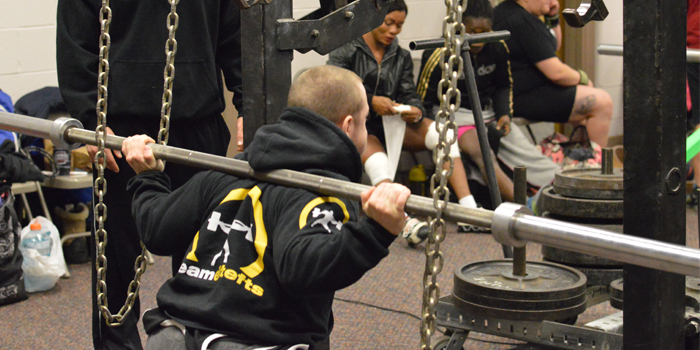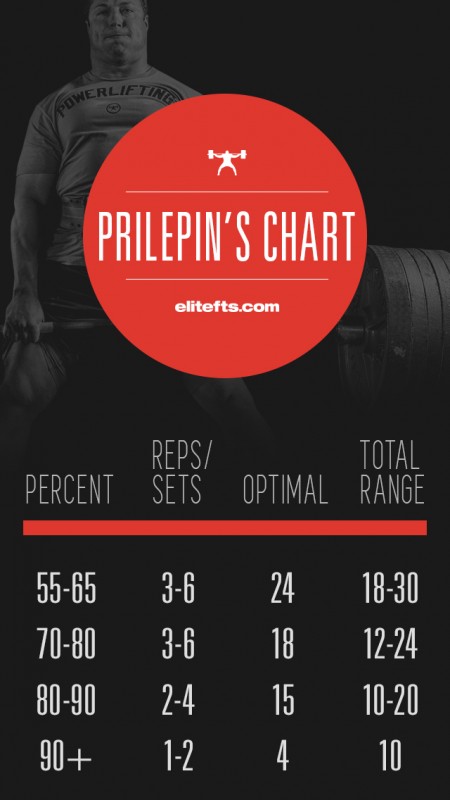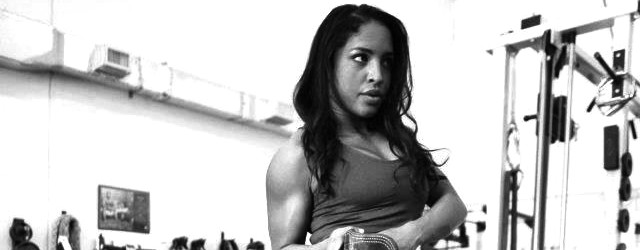
For programming and coaching inquires, please email SmitleyPerformanceSystems@gmail.com
Recently I've been thinking a lot about volume and intensity, and how it coincides with today's training. There are ample methods, programs, ebooks, resources, and blogs out there explaining theories and thought processes on training. Hell, here at Elitefts, the first word you see is "Learn", and "Educating" when it comes to our mantras as a team. This is no coincidence. Dave didn't just happen to think it flowed right. He wanted this to be at the forefront of his company and is a direct reflection of his beliefs.
I'm constantly reading and trying to better myself, not only for my own training, but my clients as well. If I can understand better training principles, I can make educated programs and suggestions to them.
What sparked me to write on such a topic, is that just like anything else, things come and go in fads. As of recently with the growth of raw powerlifting, volume training has seemed to spike as well. I think this is a great thing, which I'll list some reasons in depth below. But with that said, I don't feel that intensity has necessarily dropped. This can be a double edged sword, depending where each aspect is implemented in a program.
Terms
- Volume - This is typically measured in "work". This would be the weight x sets x reps. This would be added up for the total training session, and can even be tracked for the week, microcycle, mesocycle, or macrocycle. Generally speaking though, this is tracked from training session to training session.
- Intensity - This is the percent lifted of a one rep maximum. So for example, lifting 360 pounds in the squat for a set of two reps for a lifter with a one rep max of 400 pounds, would be 90%.
I wanted to get these terms out of the way early so you can have an idea of what I am referring to throughout the rest of the post. Many people will see intensity as "how hard you train", and while there can be a correlation, they are not one in the same. Bodybuilders are known for training with higher intensity in the gym, but seldom are they actually training with a high intensity in terms of a one rep max. There is a difference.
Relationship
When it comes to training, as the intensity increases (you lift more in terms of percent of your one rep max) you lift fewer amount of reps. This is pretty standard and simple to understand. Using the example above, we know that a lifter can get more reps with 300 than 350 if their one rep max is 400 pounds. If you don't believe me, just go load a heavier weight and try and get as many reps as a lower weight...it's not going to happen.
The reason I decided to write this in the first place, is that more and more I am seeing more volume like training, and as I mentioned, this can be a good thing. Overall volume stimulates hypertrophy and growth of a muscle (or group), and a muscle with a bigger cross sectional area is stronger. Considering powerlifting is a strength sport, strength is important and we want strong muscles. However, if trainees are going to be performing more overall volume, intensities must drop. When a lifter tries to push too much volume AND intensity, this can be a disaster in terms of recovery and increases the chances of injury, and/or the dreaded term "overtraining".
With the raw powerlifting gaining popularity, volume training has seen a spike. This does make sense, as with raw lifting there is no support from squat suits and bench shirts. The muscles, tendons, and ligaments are taking more of a beating without the protection of the gear, and volume tends to show increased strength in muscle tendons. This is what's going to help give you support in the hole of a squat or on the chest of a bench press. The stretch shortening cycle and elasticity of tendons is what's going to help you in these disadvantageous positions.
Where I am seeing major mistakes, are when lifters are training with higher volume of work on competitive exercise AND using higher intensities. There is a time and place for using both, but they need to be used intelligently. Taking 75% of your one rep max and attempting to hit multiple sets of 10 reps at this weight is going to cause you a lot of issues. If you aren't aware, 75% is roughly a 10 rep max for most lifters, so trying to hit this for multiple sets mean your relative intensity of the rep max is a 10 on an RPE scale, or 100%!!
Most don't think much about this, but if I told you to take your one rep max for multiple singles, you'd call me crazy. The principle is the same, but just with lighter loads. Understanding relative intensity of rep maxes is just as important as understanding intensity.
If you are going to hit sets of 10 for your work sets on squat for a particular training session, you would be better off to base this off something like 60% of your one rep max. This ensures you have ample "left in the tank" from set to set, and will let you acquire the amount of volume are you wanting. The same would go for sets of 5, 6, or whatever. There is a reason why many 5x5 programs have you start at 75% of your one rep max, and slowly add weight over time.
Preferred Method
I am more of a concurrent style of athlete and coach. I like many of the methods from people like Louie Simmons and Dave Tate. They have just worked well for myself and the clients I work with. This is more of my training philosophy, but really how you like to train is what you should use, regardless of what I believe.
I do believe that intensity should be used on a pretty regular basis. To get strong, you need to get comfortable handling heavy weights, both mentally and physically. This does not mean it has to be a one rep max every time you hit the gym, but it does mean you should use something "heavy" on a regular basis. The central nervous system plays a vital role in strength, and if this system is ignored for too long, you can expect to see it decrease, just like with any other system.
The caveat here, is you have to know how much and when to push it, and when to back off. I am a big fan of triples when I am in an off season style of training. I've been asked more times than I can count, why, and my reason is very simple: a heavy triple is heavy enough for me to feel a good amount of weight, but limit me from reaching much into the 90% range. It challenges the nervous system, but one heavy set is not going to crush you for weeks. You can probably recover from this pretty well if all other outside stressors are in tact (sleep, nutrition, recovery modalities, relationship/work issues).
The nice thing is, by using the term "heavy", it becomes subjective based upon that days preparedness. If you've had a shitty day at work, chances are weights are going to feel heavier, so your triple may not be a PR or even close, but if it feels heavy, you've at least got in some moderate amount of work and worked on those motor patterns. It's basically 88% or so, for THAT day.
Now when it comes to volume, I like more of this to come from accessory and supplemental work. Dave has written and spoke on this subject to such a good degree that I can't give you any more than you'd need. But, the reason I prefer this is that you can actually train the MUSCLE, not the MOVEMENT, and build muscle in a safer manner. I know that when I take big compound movements and just slightly get out of position, I increase my risk of injury. I would much rather do a higher rep set of machine/cable work when the degrees of freedom are much more limited.
Now I will use some higher rep compound movements, but I'm usually pre-fatigued or running off a percent that I know is moderate intensity, and always leave reps in the tank. It's just a smarter way to go off things rather than push it hard.
Applied
So how do I know something like this has merit?
It's provided myself with some of my best improvements as a lifter (both competitive and non). I have not missed a squat in over 16 months, and ironically enough, in that same time span I have put 64 pounds on that lift alone. I pride myself in not missing lifts in training and on meet day. Of course, it does happen, but it should not be a reoccurring issue. If you are objectively listening to your body and not always pushing the envelope during training, you have positive momentum to build off of from session to session. You need to elicit enough of a training effect for progress, not the most you can handle. If you take a weight that you hit for 5 reps last week, and get 6 this week, don't be greedy and go for 7. You've acquired more work and stimulus than last week, and your body WILL adapt.
You cannot be 100% of your best strength and performance year-round. There is a reason why training is divided into "off season" and "meet prep". Off season is to keep things lighter, improve weakness, and build a solid base of work capacity better than the one previously. Meet prep is for ramping up weights, getting more specific, and using that base that you built to spring off of to drill your sport specific skills (in this case, the squat, bench press, and deadlift). It's called peaking for a reason. You're trying to get the body to adapt for one big performance on a single given day. You can't have this year-round. However, you can improve your base strength year round, and that should be the goal of off season work.
I like to look at it this way in terms of a building:
When you start training, you are on the ground floor. You have minimal experience and strength. Just about anything you do is going to make you stronger and improve your baseline of strength (given you don't stop training for extended periods of time). After a few years and meets, your base line strength is now on the 5th floor. Hypothetically speaking, we know that for you to reach your elite total, you need to have your base level of strength on the 8th floor, and the 10th floor is where the elite total is. During a meet prep, you will adapt your body to handle 10th floor levels for a brief amount of time and earn your elite total. After the meet however, you drop back down to the 8th floor. Building that base up another level (floor) should make your ability to total elite easier, and let you obtain a new PR.
This is a VERY rough example, but the premise is there.
So when training, don't kill yourself, and build your base level of strength. Let your strategic meet preps get you ready to be at your peak, when it matters most...the platform.
Conclusion
At the end of the day, volume AND intensity are important aspects to a strength training program. Implementing them in certain areas takes educated coaches and lifters to know how to get the most out of them and provide optimal results. Building muscle will make you stronger, but increased neuromusclar synergy between muscle groups will as well. As one moves up the chart as an elite lifter, adding muscle mass becomes hard work and innervating new muscle fibers even harder. Apply volume and intensity intelligently to reap the rewards of both to allow continued success on the platform.
And by all means, don't download some shitty spreadsheet to calculate your weights and lifts for the day. I've seen many of these attempt to have lifters hit 95% of their one rep max for a set of 4 or some arbitrary number that isn't even possible at such percentages, and all this is doing is setting you up for disaster. Listen to your body, don't go "beast mode" thinking it's the only way to get strong. For every rep you miss, likely your competition isn't.











8 Comments